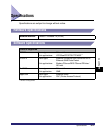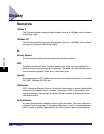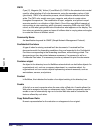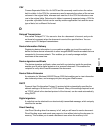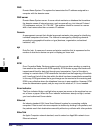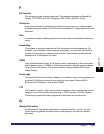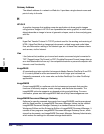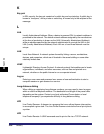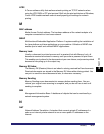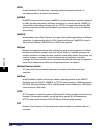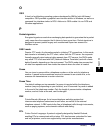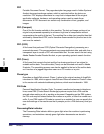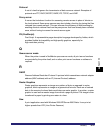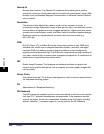
Glossary
8-35
8
Appendix
Internet Protocol (IP)
The underlying set of networking rules that describes how data is transmitted across
the Internet. Internet Protocol enables data from one computer to be split into
packets, and sent to another computer with a specific IP address.
IP address
Internet Protocol address. A 32-bit numeric address used by IP (Internet Protocol) to
specify a computer or device on the Internet. The IP address is usually written as four
numbers delimited by periods. For example, 128.121.4.5.
IPP
Internet Printing Protocol. A protocol used between a client and a print server for
carrying out remote printing over the Internet.
IPPS
Internet Printing Protocol Security. A protocol which performs encrypted SSL (Secure
Sockets Layer) communication when using IPP.
ITU-T
See CCITT/ITU-T.
J
JBIG
Joint Bi-level Image Experts Group. An experts group file specification that defines a
standard for compressing (reducing the size of) image files without any loss in image
information. Files containing photographic images in Web pages are generally
compressed so they can be transferred across the Internet more quickly. JPEG, the
format currently used, causes some loss in image data after compression, and so
reduces image quality. JBIG compression overcomes this shortcoming.
JPEG
Joint Photographic Experts Group. An experts group file specification that defines a
standard for compressing (reducing the size of) photographic and photorealistic
image files. The image compression method used involves some loss of information,
and so reduces image quality. Files containing photographic images in Web pages
are generally compressed by using the JPEG format so they can be transferred
across the Internet more quickly.



